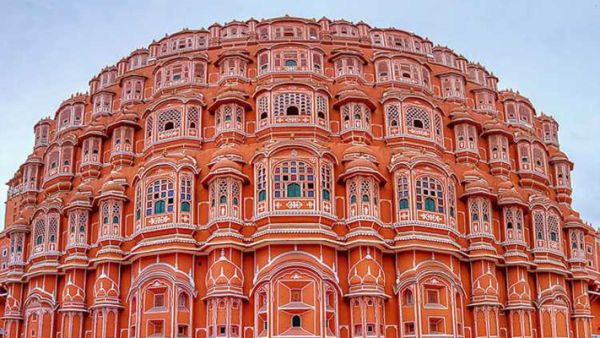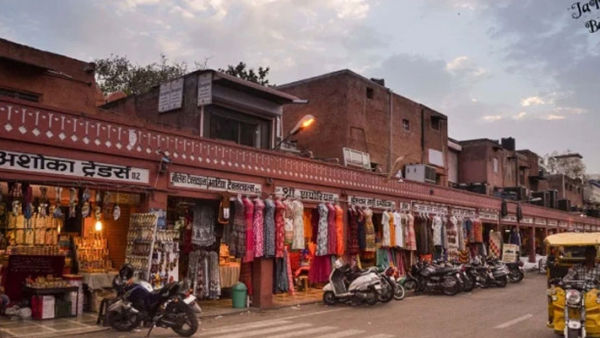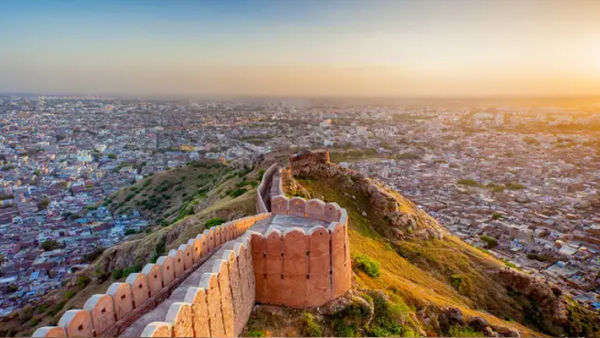
The Jantar Mantar is an extraordinary astronomical observatory located in Jaipur, Rajasthan, India. It is a UNESCO World Heritage Site and one of the largest and most well-preserved observatories of its kind. Built in the early 18th century by Maharaja Sawai Jai Singh II, the Jantar Mantar is a testament to the scientific prowess and astronomical knowledge of the time.


The Jantar Mantar comprises a collection of architectural and astronomical instruments that were used to observe celestial phenomena, measure time, track planetary movements, and conduct other astronomical calculations. The instruments are constructed with remarkable precision and accuracy, using stone, brass, and other materials. Each instrument serves a specific purpose and is designed to measure different celestial phenomena such as the position of stars, the altitude of celestial bodies, and the calculation of eclipses.
Visiting the Jantar Mantar offers a unique opportunity to delve into the fascinating world of astronomy and witness the advanced astronomical techniques employed by ancient Indian astronomers. The site is not only a scientific marvel but also a testament to the architectural brilliance of the time. Exploring the various instruments and understanding their significance provides an insight into the rich scientific and cultural heritage of India.
Today, the Jantar Mantar stands as a prominent tourist attraction, attracting visitors from around the world who come to admire its architectural splendor and delve into the mysteries of the cosmos. It serves as a reminder of humanity's enduring fascination with the stars and the remarkable achievements of ancient astronomers.
Interesting Facts
Historical Significance: The Jantar Mantar was constructed by Maharaja Sawai Jai Singh II, a Rajput king and avid astronomer, between 1727 and 1734. It was built as a part of Jai Singh's larger vision to establish a series of astronomical observatories across different cities in India.
Architectural Marvel: The Jantar Mantar in Jaipur is the largest and best-preserved among the five observatories built by Maharaja Jai Singh II. It features a unique blend of architectural and astronomical principles, with each instrument carefully designed and positioned to maximize accuracy.
Precision Instruments: The instruments at the Jantar Mantar are incredibly precise, with some of them capable of measuring time and astronomical phenomena to an accuracy of just a few seconds. They were constructed using local materials like stone and marble, as well as brass and bronze.
Sun Dial: The Samrat Yantra, also known as the Giant Sundial, is the centerpiece of the Jantar Mantar. Standing at a height of 27 meters, it is the world's largest sundial and can accurately tell the time with a minimal error margin of about two seconds.
Astronomical Measurements: The Jantar Mantar houses a variety of instruments, including the Ram Yantra for measuring altitudes, the Jai Prakash Yantra for tracking the position of celestial bodies, and the Digamsha Yantra for determining the azimuth of the sun and stars.
UNESCO World Heritage Site: The Jantar Mantar in Jaipur, along with the other observatories in Delhi, Varanasi, Ujjain, and Mathura, was collectively designated as a UNESCO World Heritage Site in 2010. This recognition highlights its cultural and scientific significance.
Visitor Experience: Today, the Jantar Mantar serves as a popular tourist attraction, drawing visitors who are fascinated by its historical and scientific significance. Guided tours are available to help visitors understand the functioning of the instruments and their relevance in astronomy.


Top Attractions Nearby
There are several top attractions located near the Jantar Mantar in Jaipur, offering visitors a chance to explore the rich cultural and historical heritage of the city. Here are some of the top attractions nearby:
City Palace: Located in the heart of Jaipur, the City Palace is a magnificent complex that showcases a blend of Rajput and Mughal architectural styles. It houses various palaces, courtyards, gardens, and museums, providing a glimpse into the royal history of Jaipur.
Hawa Mahal: Also known as the "Palace of Winds," the Hawa Mahal is an iconic landmark in Jaipur. Its unique honeycomb-like structure features intricate windows that were designed to allow royal women to observe street processions while maintaining their privacy.
Amber Fort: Situated just outside Jaipur, the Amber Fort is a stunning hilltop fortress that offers panoramic views of the surrounding landscapes. The fort boasts magnificent palaces, courtyards, and a remarkable blend of Rajput and Mughal architectural elements.
Nahargarh Fort: Perched on the Aravalli Hills, Nahargarh Fort is another impressive fortification near Jaipur. It provides breathtaking views of the city and houses ancient palaces, temples, and architectural wonders.
Jaigarh Fort: Adjacent to Nahargarh Fort, Jaigarh Fort is renowned for its massive cannon, Jaivana, which is one of the world's largest cannon on wheels. The fort offers stunning views and houses palaces, gardens, and a museum displaying weapons and artifacts.
Albert Hall Museum: Located near the City Palace, the Albert Hall Museum is the oldest museum in Rajasthan. It showcases a vast collection of artifacts, including paintings, sculptures, costumes, and traditional Rajasthani crafts.
Jalmahal: Situated amidst the Man Sagar Lake, Jalmahal is a picturesque palace known for its stunning Rajput and Mughal architecture. Although visitors cannot enter the palace, it offers a captivating sight and is a popular spot for photography.


Shopping and Must Try Cuisine
When it comes to shopping in Jaipur, there are several vibrant markets and shopping areas that offer a wide range of traditional items and handicrafts. Here are some popular shopping destinations in Jaipur:
Johari Bazaar: Known for its exquisite jewelry, Johari Bazaar is a must-visit for jewelry enthusiasts. You can find a stunning array of gemstones, silver and gold jewelry, Kundan and Meenakari work, and traditional Rajasthani designs.
Bapu Bazaar: This bustling market is famous for its textiles, particularly colorful fabrics, embroidered garments, and block-printed textiles. It's a great place to shop for clothing, bed linens, scarves, and other fabric-based souvenirs.
Tripolia Bazaar: Located near the City Palace, Tripolia Bazaar is renowned for its lac jewelry, bangles, and traditional handicrafts. You can also find beautifully crafted brassware, marble sculptures, and wooden artifacts here.
Nehru Bazaar: If you're looking for traditional Rajasthani footwear, Nehru Bazaar is the place to go. Known for its colorful Mojari shoes, this market also offers a range of textiles, handicrafts, and souvenirs.
Chandpole Bazaar: This market is famous for its block-printed fabrics, textiles, and traditional Rajasthani handicrafts. You can find a variety of home décor items, puppets, carpets, and wooden handicrafts here.
When it comes to cuisine, Jaipur offers a delightful array of traditional Rajasthani dishes and flavors. Here are some must-try dishes:
Dal Bati Churma: This iconic Rajasthani dish consists of lentil curry (dal), baked wheat balls (bati), and a sweet crumbled wheat dessert (churma). It's a flavorful and wholesome combination that is synonymous with Rajasthani cuisine.
Laal Maas: A fiery and delicious meat curry, Laal Maas is made with tender mutton or goat meat cooked in a rich gravy of red chilies and spices. It's a must-try for those who enjoy spicy dishes.
Gatte ki Sabzi: This vegetarian delicacy features gram flour dumplings (gatte) cooked in a tangy and spicy yogurt-based gravy. It is often served with roti or rice and is a popular dish in Rajasthan.
Pyaaz Kachori: Jaipur is famous for its Pyaaz Kachori, a deep-fried pastry filled with a spicy onion mixture. It's a popular snack that can be enjoyed on its own or with chutneys.
Mawa Kachori: A sweet variation of the traditional kachori, Mawa Kachori is stuffed with a rich mixture of sweetened khoya (mawa), nuts, and spices. It's a delightful dessert that is often served with a drizzle of sugar syrup.
Ghewar: A popular Rajasthani dessert, Ghewar is a round-shaped sweet cake made with flour, ghee, and sugar syrup. It is often garnished with nuts and is a must-try during festivals like Teej and Gangaur.


Best Time to Visit
The best time to visit Jaipur and enjoy its attractions and experiences, including shopping and cuisine, is during the winter months, from October to March. Here's why:
Pleasant Weather: During winter, Jaipur experiences mild and pleasant weather with temperatures ranging from around 10°C (50°F) to 25°C (77°F). The days are comfortably warm, making it ideal for outdoor activities, exploring markets, and indulging in local cuisine.
Avoiding Extreme Temperatures: Jaipur can have extremely hot summers, with temperatures soaring above 40°C (104°F). Visiting during winter allows you to avoid the scorching heat and enjoy the city's attractions comfortably.
Cultural Events: Winter is the time when Jaipur hosts various cultural events and festivals, including the renowned Jaipur Literature Festival (January). These events attract artists, writers, and performers from around the world, making it a vibrant and intellectually stimulating time to visit.







